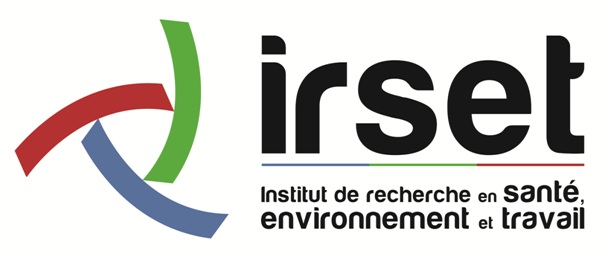Maternal occupational exposure to endocrine-disrupting chemicals during pregnancy and semen parameters in adulthood: results of a nationwide cross-sectional study among Swiss conscripts
Résumé
STUDY QUESTION: Is there a relationship between maternal occupational exposure to endocrine-disrupting chemicals (EDCs) during pregnancy and the semen quality of their sons? SUMMARY ANSWER: Our results suggest an association between maternal occupational exposure to potential EDCs, especially to pesticides, phthalates and heavy metals, and a decrease in several semen parameters. WHAT IS KNOWN ALREADY: Sexual differentiation, development and proper functioning of the reproductive system are largely dependent on steroid hormones. Although there is some animal evidence, studies on maternal exposure to EDCs during pregnancy and its effect on the semen quality of sons are scarce and none have focused on maternal occupational exposure. STUDY DESIGN, SIZE, DURATION: A cross-sectional study aiming to evaluate semen quality was carried out among Swiss conscripts aged 18 to 22 years between 2005 and 2017. PARTICIPANTS/MATERIALS, SETTING, METHODS: Conscript and parent questionnaires were completed prior to the collection of a semen sample. Semen parameters were categorised according to the guidelines of the World Health Organization (WHO). Data on maternal employment during pregnancy were provided by the parent questionnaire. Maternal occupational exposure to potential EDC categories was defined using a job-exposure matrix (JEM). Logistic regressions were used to analyse the relationship between maternal occupational exposure to EDCs and each semen parameter adjusted for potential confounding factors. Results are presented using odds ratios and 95% confidence intervals. MAIN RESULTS AND THE ROLE OF CHANCE: In total, 1,737 conscripts provided a conscript and parent questionnaire, as well as a semen sample; among these 1,045 of their mothers worked during pregnancy. Our study suggests an association between occupational exposure of mothers during pregnancy to potential EDCs and low semen volume and total sperm count, particularly for exposure to pesticides (OR 2.07, 95% CI 1.11-3.86 and OR 2.14, 95% CI 1.05-4.35), phthalates (OR 1.92, 95% CI 1.10-3.37 and OR 1.89, 95% CI 1.01-3.55), and heavy metals (OR 2.02, 95% CI 1.14-3.60 and OR 2.29, 95% CI 1.21-4.35). Maternal occupational exposure to heavy metals was additionally associated with a low sperm concentration (OR 1.89, 95% CI 1.06-3.37). LIMITATIONS, REASONS FOR CAUTION: Several limitations should be noted, such as the indirect method for maternal occupational exposure assessment during the pregnancy (JEM) and the cross-sectional design of the study. WIDER IMPLICATIONS OF THE FINDINGS: Our observations reinforce the need to inform pregnant women of potential hazards during pregnancy that could impair their child’s fertility. Additional studies are needed to confirm the involvement of EDCs. STUDY FUNDING/COMPETING INTEREST(S): This work was supported by the Swiss Centre for Applied Human Toxicology: SCAHT and the ’Fondation privée des Hôpitaux Universitaires de Genève’. The collection of human biological material used for this study was supported by the FABER Foundation, the Swiss National Science Foundation (SNSF): NFP 50 ’Endocrine Disruptors: Relevance to Humans, Animals and Ecosystems’, the Medical Services of the Swiss Army (DDPS) and Medisupport. The authors declare they have no competing financial interests. TRIAL REGISTRATION NUMBER: N/A.
